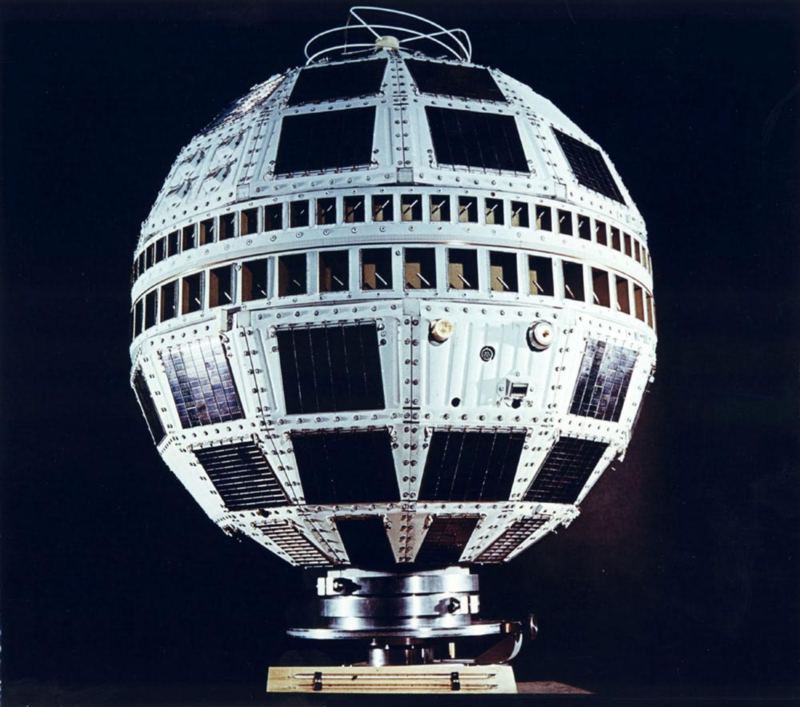The first live trans-Atlantic television satellite broadcast took place on July 23, 1962, and was made via AT&T’s Telstar 1 satellite.
Telstar had been launched 13 days prior to the broadcast by a Delta rocket from Cape Canaveral. It was the first privately sponsored space launch.
Telstar was part of a multi-national agreement between AT&T, Bell Telephone Laboratories, NASA, the British General Post Office, and the French National PTT (Post, Telegraph & Telecom Office) to develop experimental satellite communications over the Atlantic Ocean.

Limited by what the Delta rocket could carry, the satellite is roughly spherical (see photo), measures 34.5 inches in length, and weighs about 170 pounds. Telstar was spin-stabilized and its outer surface was covered with solar cells to generate power.
Telstar had one innovative transponder to relay data and an omnidirectional array of small antenna elements around the satellite's "equator" received 6 GHz microwave signals to be relayed. The transponder converted the frequency to 4 GHz, amplified the signals in a traveling-wave tube, and retransmitted them omnidirectionally via the adjacent array of larger box-shaped cavities. The prominent helical antenna was for telecommands from a ground station.
The first public broadcast featured CBS's Walter Cronkite and NBC's Chet Huntley in New York, and the BBC's Richard Dimbleby in Brussels. The transmission linked London and Paris to the US. The link was established at 10:58 BST. Telstar 1 also relayed the first telephone call to be transmitted through space later in the same day.
Although no longer functional, Telstar remains in orbit.